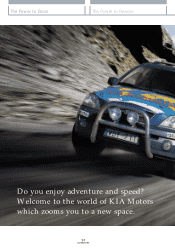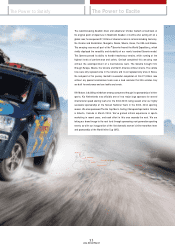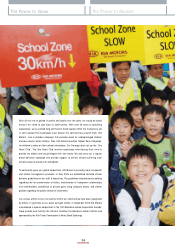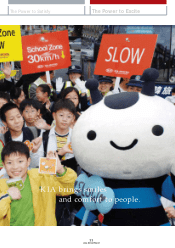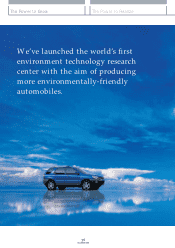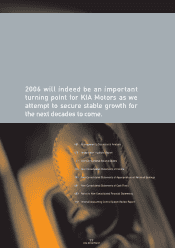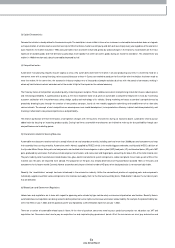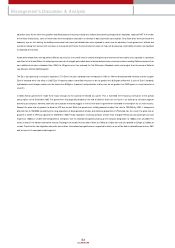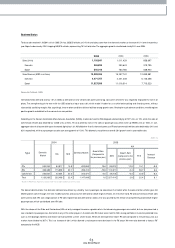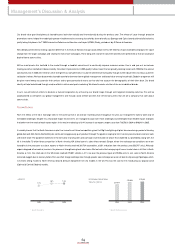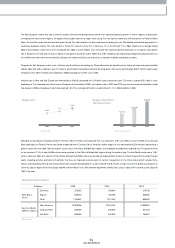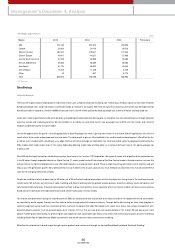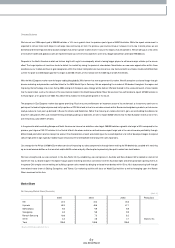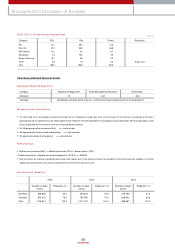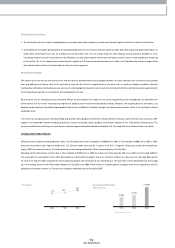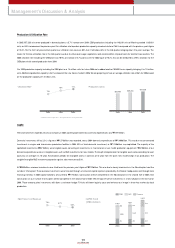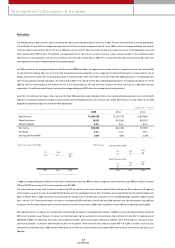Kia 2005 Annual Report Download - page 62
Download and view the complete annual report
Please find page 62 of the 2005 Kia annual report below. You can navigate through the pages in the report by either clicking on the pages listed below, or by using the keyword search tool below to find specific information within the annual report.
62
KIA MOTORS
Management’s Discussion & Analysis
education taxes. At the same tim e, gasoline and diesel prices at the pum p include four indirect taxes covering transportation, education, roads and VAT. In the wake
of the Asian financial crisis, som e of these taxes were exem pted or reduced in an attem pt to boost dom estic consum ption. Once lawmakers were convinced the
econom y was on firm footing, tax-holidays were eased and more fuel-related taxes were im posed to raise funds for education. Local governm ent officials also
wanted to recoup lost revenue from car taxes, so they could and finance the construction of roads. On top such bureaucracy, autom obile em issions are regulated
to help keep the air clean.
Autom otive-related laws and regulations differ by country, but the overall trend is toward strengthening environm ental and safety rules, especially in advanced
countries. In the United States, the federal governm ent sets the legally perm issible levels of autom obile em issions, and som e states including California enforce their
ow n additional emissions standards. From 2004, the US governm ent has enforced the Tier II Emissions Standards, which are tougher than the previous National
Low Em ission Vehicle (NLEV) program.
The EU is also tightening its emissions regulations. The Euro I em ission standards were introduced in 1992 (in 1994 for diesel-pow ered vehicles) and the tougher
Euro IV standard went into effect in 2005. Euro IV requires carbon monoxide em issions to be no greater than 0.50 grams/ kilom eter (a sixth of Euro I standard);
hydrocarbons and nitrogen oxides m ust be low er than 0.30g/ km (a quarter); and particulate matter must be no greater than 0.025 grams in every kilom eter (a
seventh).
In 2005, Korean governm ent made three major changes to the autom otive-related tax system . First, it extended the temporary exem ption of the special
consum ption tax to Decem ber 2005. The governm ent had originally decided at the end of 2004 to w aive tax until June in an attem pt to stim ulate stagnant
dom estic consum ption. How ever, dom estic consumption remained sluggish in the first half and the governm ent extended the exemption for six more months.
Second, the price ratio of gasoline to diesel to LPG w as revised. While the government initially planned to adjust the ratio to 100:70:65 by 2007, it changed its
planned ratio to 100:85:50 considering the rising proportion of diesel-pow ered vehicles and declining proportion of LPG-fueled cars. As a result, the price ratio of
gasoline to diesel to LPG w as adjusted to 100:75:50 in 2005. Finally, regulations involving com pact vehicles have changed. Previously only passenger cars with
engines of 1,500cc or sm aller were designated as “com pacts,” but the standard changed, bum ping up the com pact designation to 1,600cc since July 2005. This
works in favor of the Korean autom otive industry. Passenger car m odels that are sold in Korea as 1,500cc or sm aller can now be exported to Europe as 1,600cc or
sm aller. Thanks to the new legislation, dom estic auto makers’ international com petitiveness is expected to clim b, as w e will be able to rationalize som e of our R&D
and test costs in the com pact m odel segm ent.


